Nikil Pancha
OmniSearchSage: Multi-Task Multi-Entity Embeddings for Pinterest Search
Apr 25, 2024



Abstract:In this paper, we present OmniSearchSage, a versatile and scalable system for understanding search queries, pins, and products for Pinterest search. We jointly learn a unified query embedding coupled with pin and product embeddings, leading to an improvement of $>8\%$ relevance, $>7\%$ engagement, and $>5\%$ ads CTR in Pinterest's production search system. The main contributors to these gains are improved content understanding, better multi-task learning, and real-time serving. We enrich our entity representations using diverse text derived from image captions from a generative LLM, historical engagement, and user-curated boards. Our multitask learning setup produces a single search query embedding in the same space as pin and product embeddings and compatible with pre-existing pin and product embeddings. We show the value of each feature through ablation studies, and show the effectiveness of a unified model compared to standalone counterparts. Finally, we share how these embeddings have been deployed across the Pinterest search stack, from retrieval to ranking, scaling to serve $300k$ requests per second at low latency. Our implementation of this work is available at https://github.com/pinterest/atg-research/tree/main/omnisearchsage.
TransAct: Transformer-based Realtime User Action Model for Recommendation at Pinterest
May 31, 2023Abstract:Sequential models that encode user activity for next action prediction have become a popular design choice for building web-scale personalized recommendation systems. Traditional methods of sequential recommendation either utilize end-to-end learning on realtime user actions, or learn user representations separately in an offline batch-generated manner. This paper (1) presents Pinterest's ranking architecture for Homefeed, our personalized recommendation product and the largest engagement surface; (2) proposes TransAct, a sequential model that extracts users' short-term preferences from their realtime activities; (3) describes our hybrid approach to ranking, which combines end-to-end sequential modeling via TransAct with batch-generated user embeddings. The hybrid approach allows us to combine the advantages of responsiveness from learning directly on realtime user activity with the cost-effectiveness of batch user representations learned over a longer time period. We describe the results of ablation studies, the challenges we faced during productionization, and the outcome of an online A/B experiment, which validates the effectiveness of our hybrid ranking model. We further demonstrate the effectiveness of TransAct on other surfaces such as contextual recommendations and search. Our model has been deployed to production in Homefeed, Related Pins, Notifications, and Search at Pinterest.
ItemSage: Learning Product Embeddings for Shopping Recommendations at Pinterest
May 24, 2022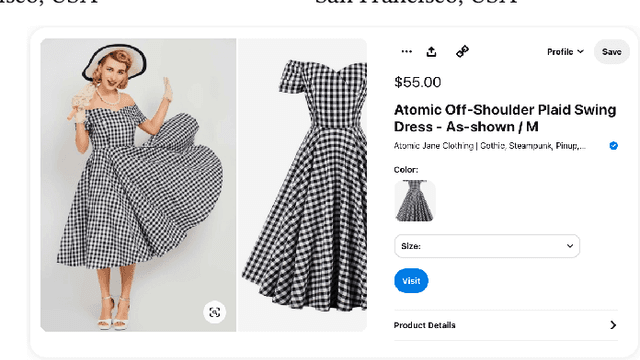

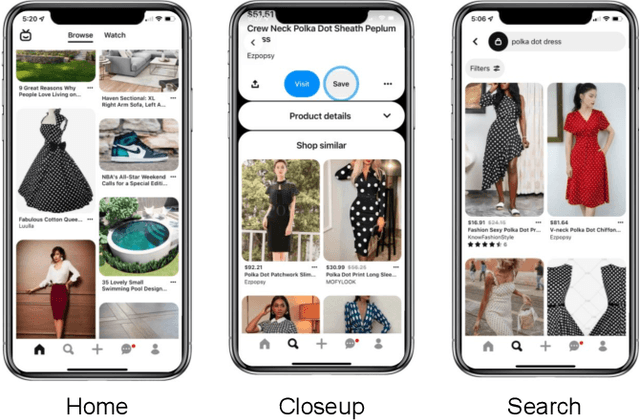

Abstract:Learned embeddings for products are an important building block for web-scale e-commerce recommendation systems. At Pinterest, we build a single set of product embeddings called ItemSage to provide relevant recommendations in all shopping use cases including user, image and search based recommendations. This approach has led to significant improvements in engagement and conversion metrics, while reducing both infrastructure and maintenance cost. While most prior work focuses on building product embeddings from features coming from a single modality, we introduce a transformer-based architecture capable of aggregating information from both text and image modalities and show that it significantly outperforms single modality baselines. We also utilize multi-task learning to make ItemSage optimized for several engagement types, leading to a candidate generation system that is efficient for all of the engagement objectives of the end-to-end recommendation system. Extensive offline experiments are conducted to illustrate the effectiveness of our approach and results from online A/B experiments show substantial gains in key business metrics (up to +7% gross merchandise value/user and +11% click volume).
* 9 pages, 5 figures
MultiBiSage: A Web-Scale Recommendation System Using Multiple Bipartite Graphs at Pinterest
May 21, 2022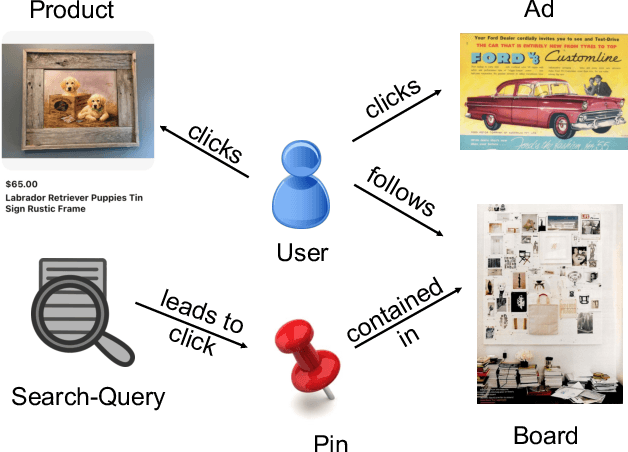
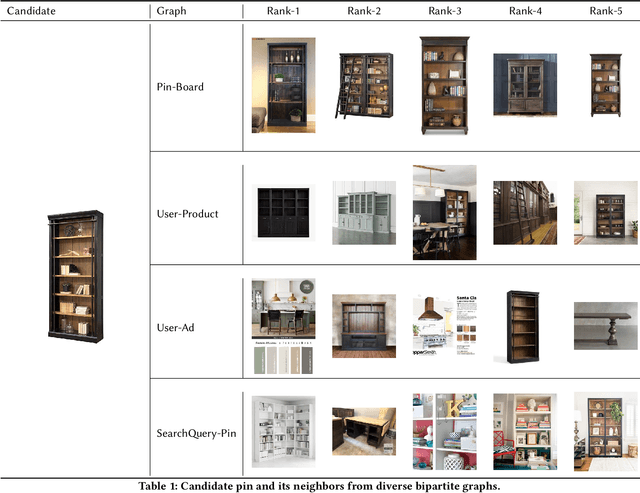
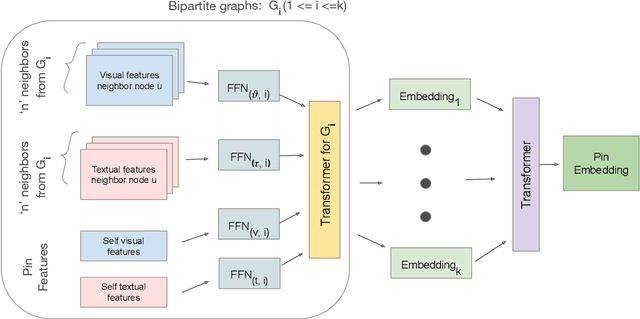
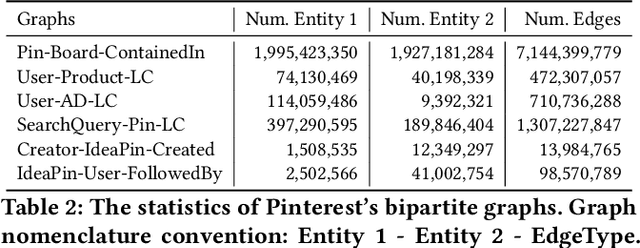
Abstract:Graph Convolutional Networks (GCN) can efficiently integrate graph structure and node features to learn high-quality node embeddings. These embeddings can then be used for several tasks such as recommendation and search. At Pinterest, we have developed and deployed PinSage, a data-efficient GCN that learns pin embeddings from the Pin-Board graph. The Pin-Board graph contains pin and board entities and the graph captures the pin belongs to a board interaction. However, there exist several entities at Pinterest such as users, idea pins, creators, and there exist heterogeneous interactions among these entities such as add-to-cart, follow, long-click. In this work, we show that training deep learning models on graphs that captures these diverse interactions would result in learning higher-quality pin embeddings than training PinSage on only the Pin-Board graph. To that end, we model the diverse entities and their diverse interactions through multiple bipartite graphs and propose a novel data-efficient MultiBiSage model. MultiBiSage can capture the graph structure of multiple bipartite graphs to learn high-quality pin embeddings. We take this pragmatic approach as it allows us to utilize the existing infrastructure developed at Pinterest -- such as Pixie system that can perform optimized random-walks on billion node graphs, along with existing training and deployment workflows. We train MultiBiSage on six bipartite graphs including our Pin-Board graph. Our offline metrics show that MultiBiSage significantly outperforms the deployed latest version of PinSage on multiple user engagement metrics.
PinnerFormer: Sequence Modeling for User Representation at Pinterest
May 09, 2022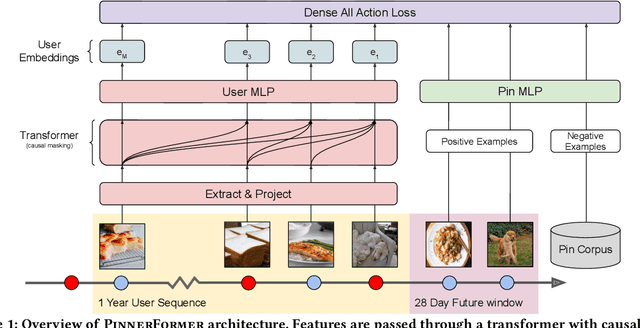

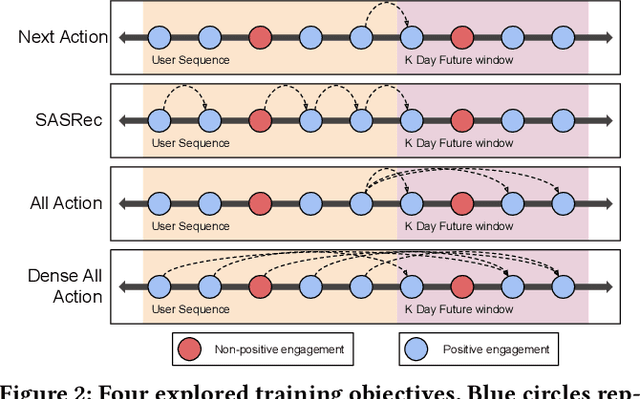
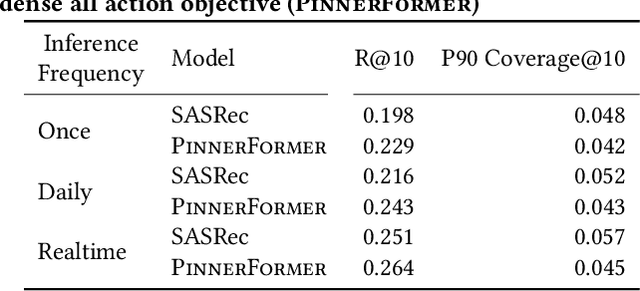
Abstract:Sequential models have become increasingly popular in powering personalized recommendation systems over the past several years. These approaches traditionally model a user's actions on a website as a sequence to predict the user's next action. While theoretically simplistic, these models are quite challenging to deploy in production, commonly requiring streaming infrastructure to reflect the latest user activity and potentially managing mutable data for encoding a user's hidden state. Here we introduce PinnerFormer, a user representation trained to predict a user's future long-term engagement using a sequential model of a user's recent actions. Unlike prior approaches, we adapt our modeling to a batch infrastructure via our new dense all-action loss, modeling long-term future actions instead of next action prediction. We show that by doing so, we significantly close the gap between batch user embeddings that are generated once a day and realtime user embeddings generated whenever a user takes an action. We describe our design decisions via extensive offline experimentation and ablations and validate the efficacy of our approach in A/B experiments showing substantial improvements in Pinterest's user retention and engagement when comparing PinnerFormer against our previous user representation. PinnerFormer is deployed in production as of Fall 2021.
 Add to Chrome
Add to Chrome Add to Firefox
Add to Firefox Add to Edge
Add to Edge